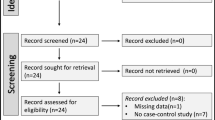Abstract
Interferons (IFNs) play important roles in tumor pathogenesis by controlling apoptosis and through cellular anti-proliferative and differentiation activities. Interferon inducible transmembrane protein (IFITM) family genes were first discovered in interferon-treated neuroblastoma cells. IFITM3 is a member of the IFITM family, and has been described as a key player in the specification of germ cell fate. We have previously identified 7 single nucleotide polymorphisms (SNPs) and multiple variation regions in the IFITM3 gene and have suggested that IFITM3 polymorphisms are associated with a susceptibility to ulcerative colitis (UC). The present study investigates whether the IFITM3 SNPs g.-204T>G, g.-175T>C, and g.42C>T are associated with rheumatoid arthritis (RA). Although, the genotype and allelic frequencies of these SNPs in the RA patients were not different from those in the healthy control group, the distribution of the major haplotypes (GTC, TCT and TTT) of the IFITM3 SNPs in RA patients were significantly different from those in the healthy control group (P = 5.34E-12, 1.47E-5 and 1.51E-18, respectively). Our results strongly suggest that the haplotypes of the IFITM3 polymorphisms may be associated with a susceptibility to RA.
Similar content being viewed by others
References
Arnett FC, Edworthy SM, Bloch DA, McShane DJ, Fries JF, Cooper NS, Healey LA, Kaplan SR, Liang MH, Luthra HS et al. (1988) The American Rheumatism Association 1987 revised criteria for the classification of rheumatoid arthritis. Arthritis Rheum. 31: 315–324.
Baeten D, Peene I, Union A, Meheus L, Sebbag M, Serre G, Veys EM and Keyser FD (2001) Specific presence of intracellular citrullinated proteins in rheumatoid arthritis synovium: relevance to antifilaggrin autoantibodies. Arthritis Rheum. 44: 2255–2262.
Brass AL, Huang IC, Benita Y, John SP, Krishnan MN, Feeley EM, Ryan BJ, Weyer JL, Weyden LVD, Fikrig E et al. (2009) The IFITM proteins mediate cellular resistance to influenza A H1N1 virus, West Nile virus, and dengue virus. Cell 139: 1243–1254.
Chae SC, Park YR, Shim SC, Lee IK and Chung HT (2005) Eotaxin-3 gene polymorphisms are associated with rheumatoid arthritis in a Korean population. Hum. Immunol. 66: 314–320.
Chae SC, Shim SC. and Chung HT (2009) Association of TBX21 polymorphisms in a Korean population with rheumatoid arthritis. Exp. Mol. Med. 41: 33–41.
Chae SC, Song JH, Shim SC, Yoon KS and Chung HT (2004) The exon 4 variations of Tim-1 gene are associated with rheumatoid arthritis in a Korean population. Biochem. Biophys. Res. Commun. 315: 971–975.
Dolhain RJ, van der Heiden AN, ter Haar NT, Breedveld FC and Miltenburg AM (1996) Shift toward T lymphocytes with a T helper 1 cytokine-secretion profile in the joints of patients with rheumatoid arthritis. Arthritis Rheum. 39: 1961–1969.
Edwards JCW and Cambridge G (1998) Rheumatoid arthritis: the predictable effect of small immune complexes in which antibody is also antigen. Br. J. Rheumatol. 37: 126–130.
Farrell RJ (2002) Ulcerative colitis. Lancet 359: 331–340.
Friedman RL, Manly SP, McMahon M, Kerr IM and Stark GR (1984) Transcriptional and posttranscriptional regulation of interferon-induced gene expression in human cells. Cell 38: 745–755.
Gregersen PK (1999) Genetics of rheumatoid arthritis: confronting complexity. Arthritis Res. 1: 37–44.
Harrison B, Thomson W, Symmons D, Ollier B, Wiles N, Payton T and silman A (1999) The influence of HLA-DRB1 alleles and rheumatoid factor on disease outcome in an inception cohort of patients with early inflammatory arthritis. Arthritis Rheum. 42: 2174–2183.
Hisamatsu T, Watanabe M, Ogata H, Ezaki T, Hozawa S, Ishii H, Kanai T and Hibi T (1999) Interferon-inducible Gene Family 1-8U Expression in Colitis-associated Colon Cancer and Severely Inflamed Mucosa in Ulcerative Colitis. Cancer Res. 59: 5927–5931.
Lange UC, Saitou M, Western PS, Barton SC and Surani MA (2003) The fragilis interferon-inducible gene family of transmembrane proteins is associated with germ cell specification in mice. BMC Dev. Biol. 3: 1
Lewin AR, Reid LE, McMahon M, Stark GR and Kerr IM (1991) Molecular analysis of a human interferon-inducible gene family. Eur. J. Biochem. 199: 417–423.
Lu J, Pan Q, Rong L, He W, Liu SL and Liang C (2011) The IFITM proteins inhibit HIV-1 infection. J. Virol. 85: 2126–2137.
Plevy SE, Landers CJ, Prehn J, Carramanzana NM, Deem RL, Shealy D and Targan SR (1997) A role for TNF-alpha and mucosal T helper-1 cytokines in the pathogenesis of Crohn’s disease. J. Immunol. 159: 6276–6282.
Reparon-Schuijt CC, Van Esch WJ, Van Kooten C, Schellekens GA, de Jong BA, van Venrooij WJ, Breedveld FC and Verweij CL (2001) Secretion of anti-citrulline-containing peptide antibody by B lymphocytes in rheumatoid arthritis. Arthritis Rheum. 44: 41–47.
Schellekens GA, Visser H, de Jong BA, van den Hoogen FH, Hazes JM, Breedveld FC and Van Venrooij WJ (2000) The diagnostic properties of rheumatoid arthritis antibodies recognizing a cyclic citrullinated peptide. Arthritis Rheum. 43: 155–163.
Seo GS, Lee JK, Yu JI, Yun KJ, Chae SC and Choi SC (2010) Identification of the polymorphisms in IFITM3 gene and their association in a Korean population with ulcerative colitis. Exp. Mol. Med. 42: 99–104.
Simon AK, Seipelt E and Sieper J (1994) Divergent T-cell cytokine patterns in inflammatory arthritis. Proc. Natl. Acad. Sci. USA 91: 8562–8566.
Tanaka SS, Yamaguchi YL, Tsoi B, Lickert H and Tam PP (2005) IFITM/Mil/fragilis family proteins IFITM1 and IFITM3 play distinct roles in mouse primordial germ cell homing and repulsion. Dev. Cell 9: 745–756.
Van der Heide A, Jacobs JW, Haanen HC and Bijlsma JW (1995) Is it possible to predict the first year extent of pain and disability for patients with rheumatoid arthritis? J. Rheumatol. 22: 1466–1470.
Author information
Authors and Affiliations
Corresponding author
Rights and permissions
About this article
Cite this article
Lee, SY., Yu, JI. & Chae, SC. Associations of IFITM3 haplotypes with rheumatoid arthritis in a Korean population. Genes Genom 34, 493–498 (2012). https://doi.org/10.1007/s13258-011-0241-8
Received:
Accepted:
Published:
Issue Date:
DOI: https://doi.org/10.1007/s13258-011-0241-8




